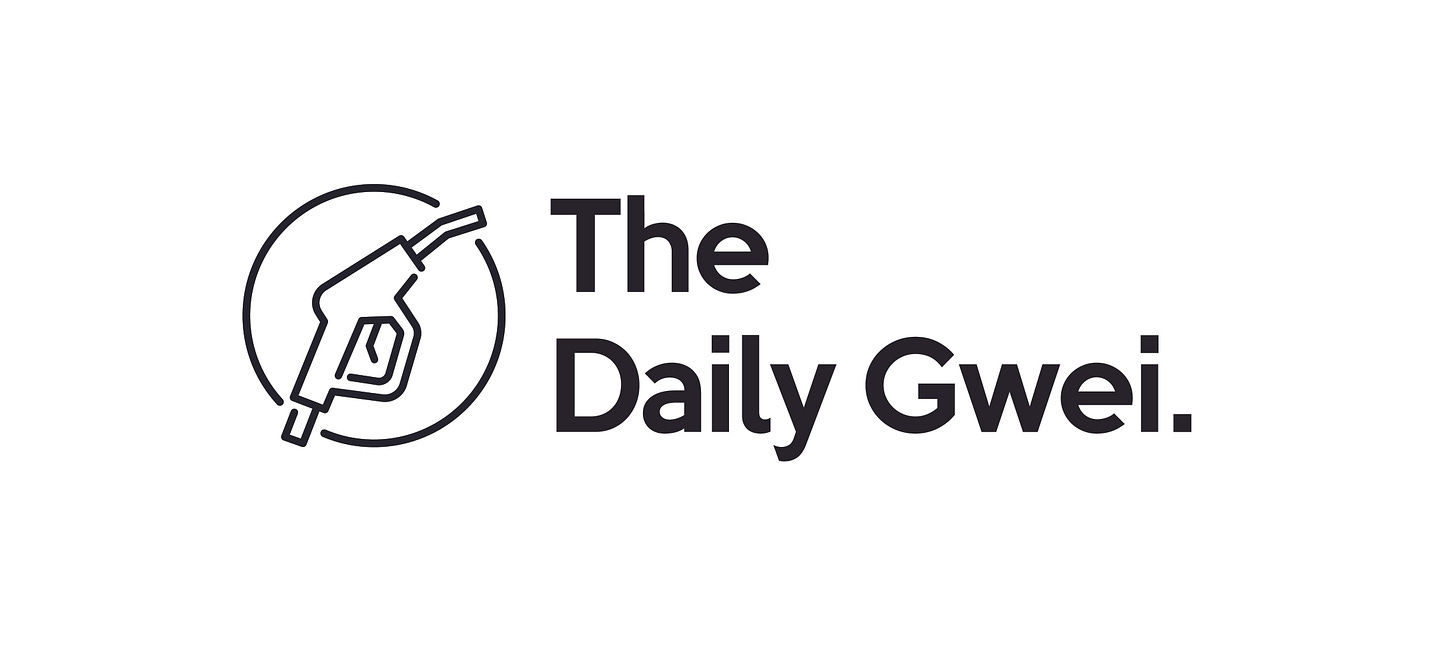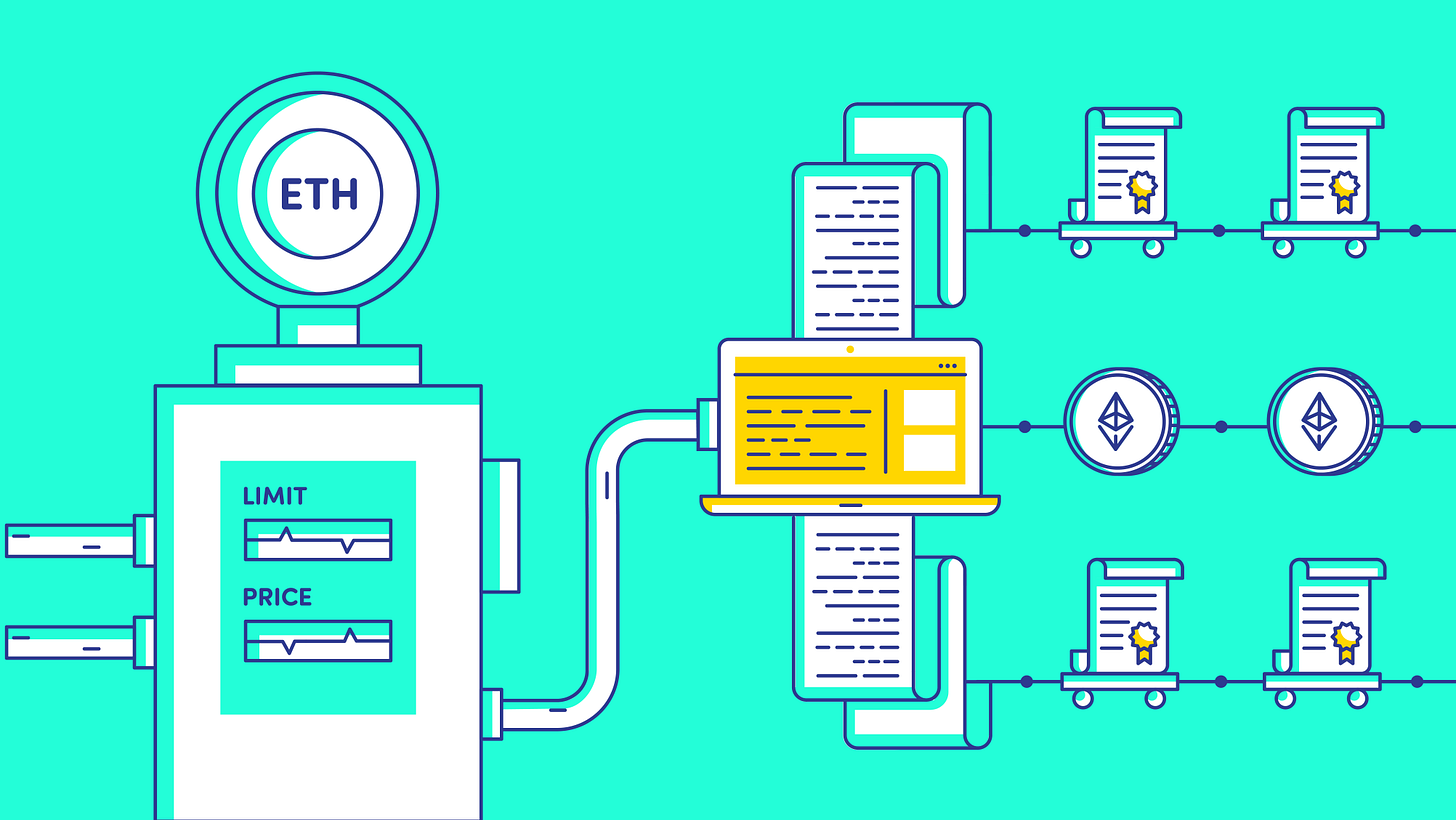
As many of you probably know, EIP-1559 is the most hotly anticipated upgrade that is currently being researched and developed to be included in a future Ethereum network upgrade. This EIP would (in theory) greatly improve the fee market on Ethereum and introduce a burn mechanism that would burn some ETH on every transaction. If you’re unfamiliar with this EIP, you can read this piece to get an understanding before continuing with today’s piece. So, where does this EIP stand today? Well Tim Beiko put together an excellent Twitter thread a couple of days ago that I’d like to unpack.

Image source: https://education.district0x.io/general-topics/understanding-ethereum/what-is-gas/
Tim’s first tweet mentions that there are currently two Ethereum clients which have an implementation built for EIP-1559 - they are Vulcanize’s Geth fork and Besu. Vulcanize is the company currently tasked with a lot of the EIP-1559 development work and it is being headed up by long-time Ethereum community member Rick Dudley. These two clients are currently running in a private testnet with a public testnet expected once EIP-1559 is implemented across eth1 mainnet clients. After this, Tim wants to see an incentivized testnet/attacknet which would serve as a way of incentivizing people with money to try and break EIP-1559 so that we could ensure it is economically and technically sound in a live environment.
Tim then mentions the work being done by the Ethereum Robust Incentives Group (RIG) which is a group that is part of the Ethereum Foundation and is tasked with doing economic analysis on things like eth2’s issuance rate and EIP-1559. You can find all of their analysis on EIP-1559 here. The Decentralization Foundation has also tapped Tim Roughgarden to perform a comprehensive analysis of Ethereum transaction price mechanisms (including EIP-1559).
Now we get onto the juicy stuff - when is EIP-1559 actually coming to the Ethereum mainnet? Well this isn’t an easy question to answer as this EIP is probably the largest and most complex change to Ethereum since it first went live back in 2015. Due to this, the EIP needs to go through thorough analysis, testing and development before it can even be considered for mainnet. As Tim explains in his thread, throwing extra money at research/development of EIP-1559 may speed up the process but it also may not - there are already plenty of smart people working on it. Of course, there is always the risk that the researchers and developers have missed something critical and EIP-1559 may not even work as intended (though I’d say this risk is low).
Other projects are also experimenting with EIP-1559 in their networks such as Celo and Filecoin. I haven’t personally seen any updates or write-ups on how the EIP is performing on those networks but it’s great to see testing being done outside of Ethereum. Micah Zoltu also wrote a great piece that argues that EIP-1559 actually improves the Ethereum network’s resistance to 51% attacks in some scenarios. Additionally, Hasu and Georgios Konstantopoulos wrote a comprehensive overview of the EIP here.
So, where to from here? Well the EIP-1559 implementers meet every few weeks on a call to discuss status updates, the roll out plan and more. The calls aren’t livestreamed but are uploaded to YouTube after the fact (the next call is scheduled for August 28th). If you want to keep up with the bleeding edge discussions, you can join the Eth R&D Discord server here and head to the #1559-fee-market channel.
If I had to give an ETA on EIP-1559, I would say maybe (big maybe) within the next 6 to 12 months if we can rally the community around getting this into a standalone Ethereum network upgrade (instead of being bundled with a bunch of other EIPs). Of course, this ETA is moot if there are any big roadblocks that pop up over the next few months - please don’t hold me to this estimation!
Have a great day everyone,
Anthony Sassano
All information presented above is for educational purposes only and should not be taken as investment advice.



